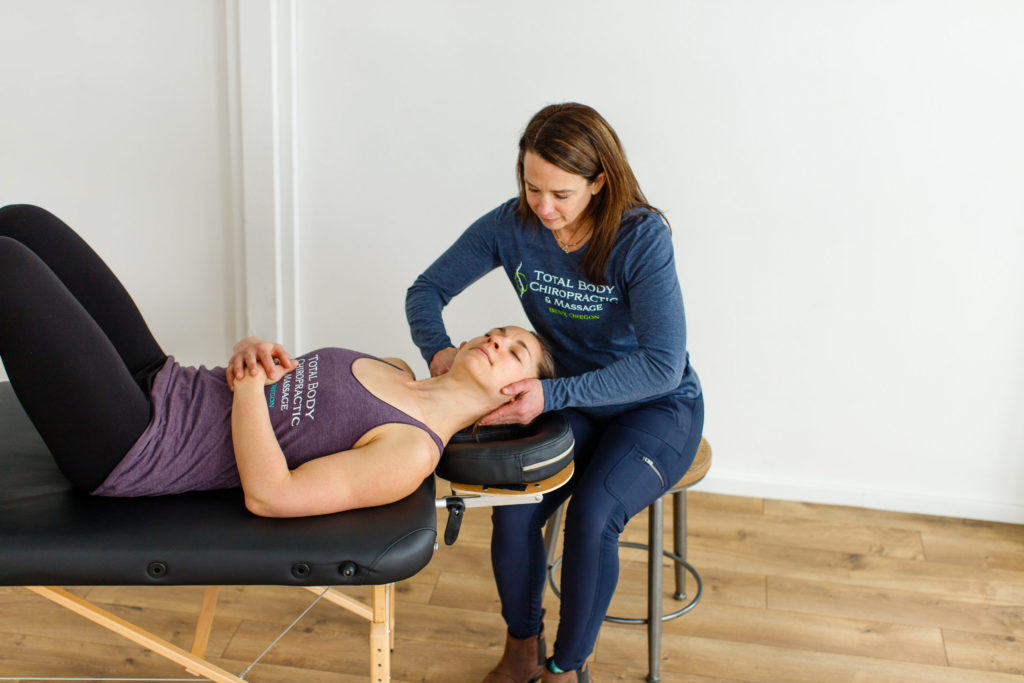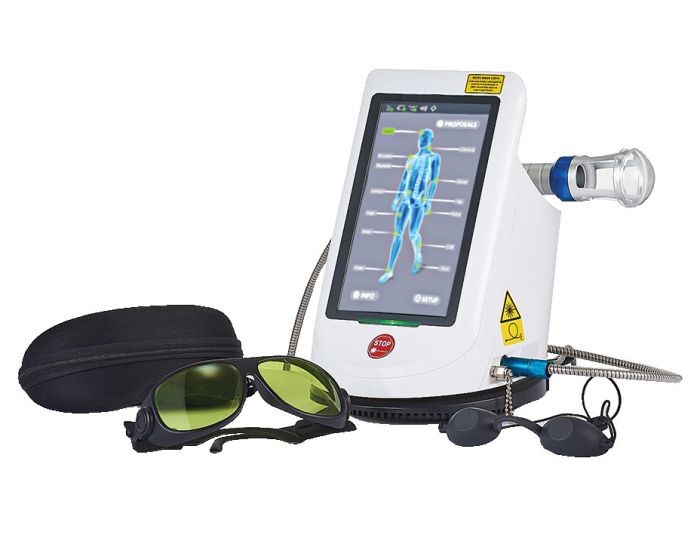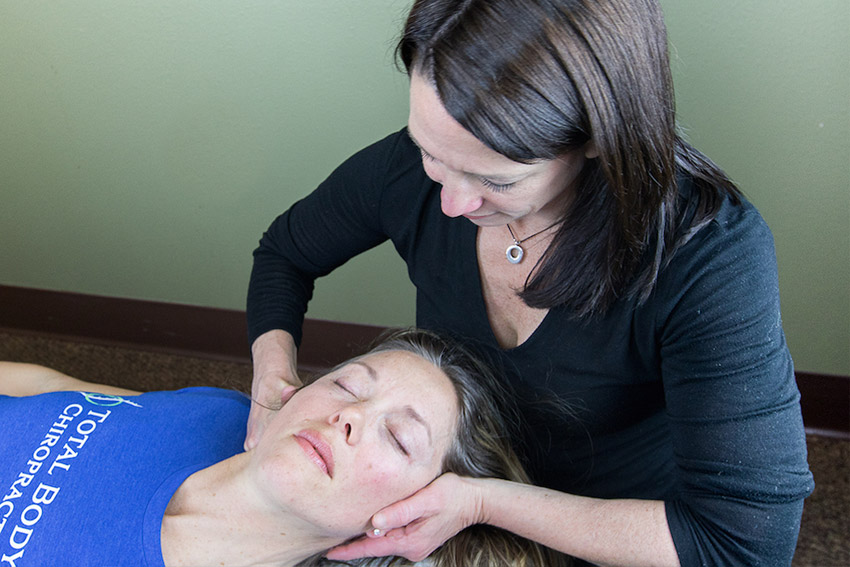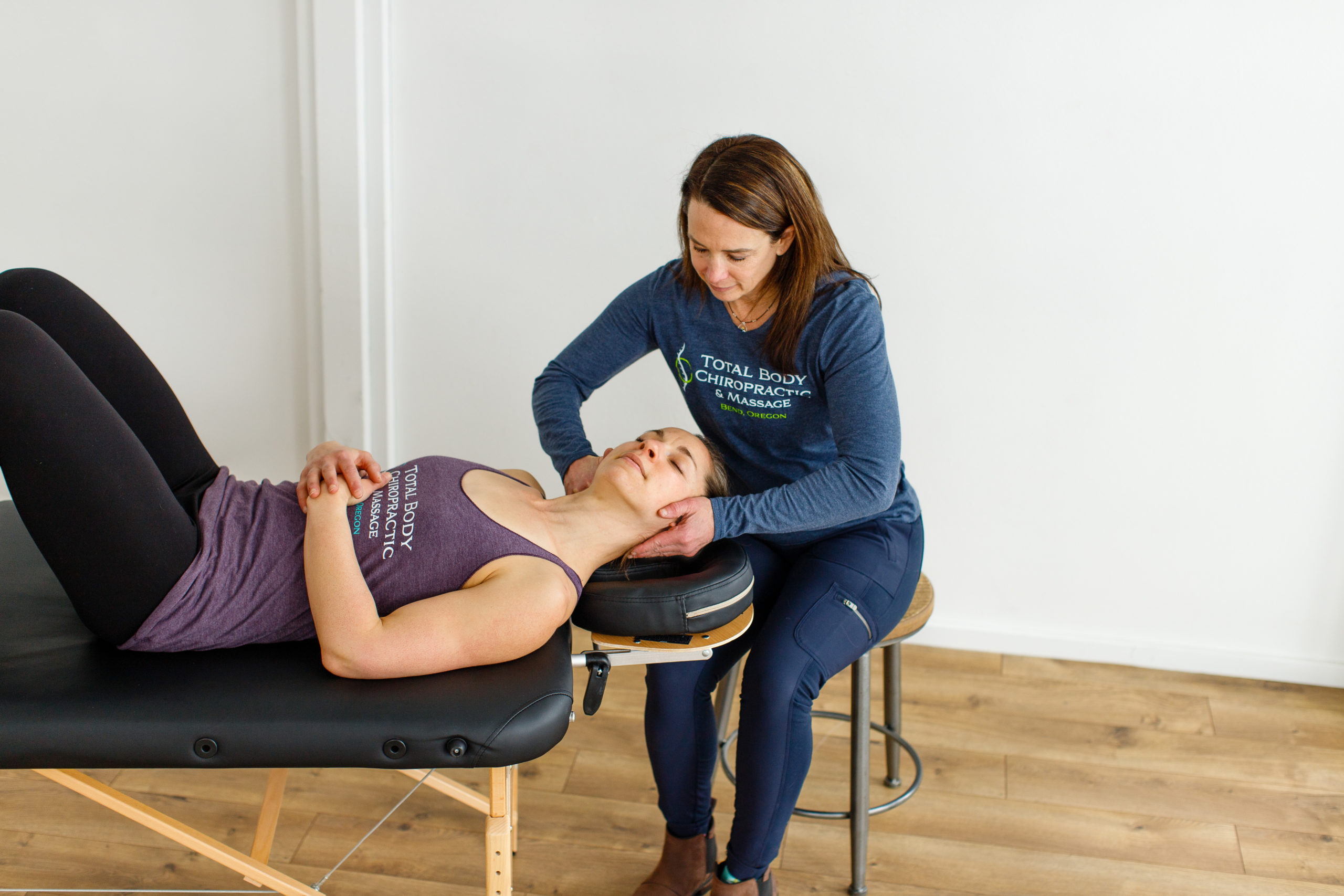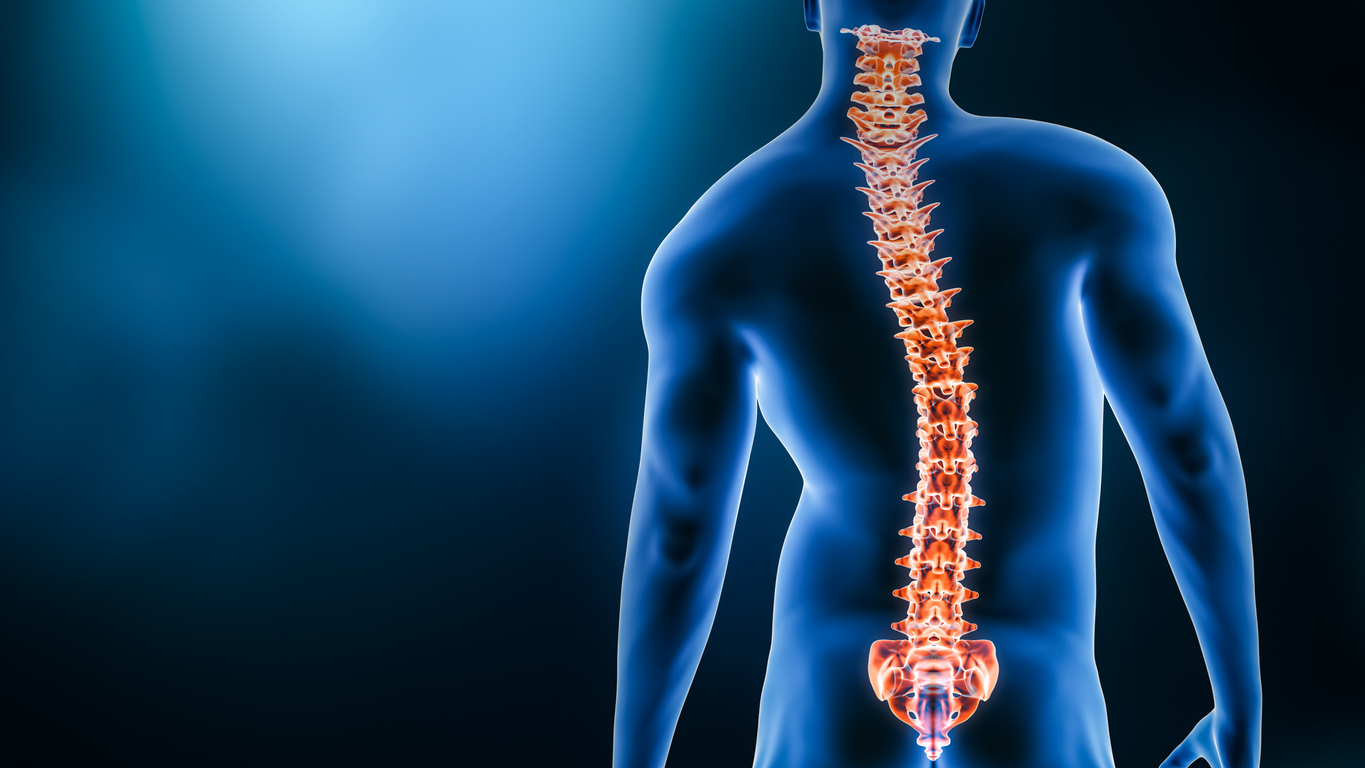Relieve Headaches Naturally with the Power of Chiropractic and Massage
Does your day grind to a halt every time a headache strikes? Headaches easily derail your whole day. They sap your energy and make even simple tasks feel like pushing a boulder up a hill. If you’re a Bend resident who struggles with frequent headaches – and around 1 in 6 Americans do so, too – you’re probably on the lookout for a drug-free path toward lasting relief, right?
Headaches are one of the most common health complaints in the world. They affect people of all ages, genders, occupations, and backgrounds. But you can overcome them naturally. At Total Body Chiropractic in Bend (and surrounding areas), we help you find relief by uncovering the root causes of your headaches.
So, let’s see how many different types of headaches exist. What causes them? How do our chiropractors in Bend help you find relief? What makes massage therapy the perfect treatment?
Let’s explore how you can break free from the cycle of pain and reclaim your life.
Understanding Headaches: Types and Root Causes
Headaches are more common than you think. Nearly 75% of kids get them before turning 16. Migraine attacks make employees miss 4.4 workdays each year. But headaches come in many types; they also stem from a variety of reasons. If you want long-term pain relief from headache symptoms, you must start by understanding the type and its root cause. Getting chiropractic care and massage therapy in Bend will help you find lasting relief.

Common Types of Headaches
- Tension Headaches: It’s the most common type. You feel a dull, aching pain around your head, like wearing a very tight band. This headache stems from stress. Also, if you spend long hours at a desk or on your phone, you’ll likely suffer from chronic tension headaches.
- Migraines: A study says that 11.7% to 14.7% of Americans suffer from migraine headaches. This condition can be intense with a throbbing headache. You’ll feel the migraine pain on one side of your head. Migraine symptoms last a few hours or several days, depending on the root cause, including:
- Light/sound sensitivity
- Nausea and vomiting
- Auras (visual disturbances)
- Cluster Headaches: Cluster ones are rare (1 out of 1,000 people). But they are extremely severe. You will feel a burning, piercing pain around a single eye. Cluster headaches also come in cycles.
- Cervicogenic Headaches: This type of headache starts with neck pain, slowly radiating to your head. These headaches often stem from neck trauma. Muscle spasms and poor posture may also lead to cervicogenic headaches. These headaches most often occur at the same time every day, like clockwork.
- Sinus Headaches: These painful headaches cause pressure and pain around your face, chiefly sinuses. If you have a sinus headache, you may also get nasal congestion or infection.
Root Causes of Headaches
- Poor Posture: When you habitually slouch or hunch over your phone, it weakens the muscles in your back and neck. The result is spinal alignment, ergo muscle soreness and headaches.
- Stress: High stress levels stiffen the muscles in your neck and shoulders. That’s why stress or depression sets the stage for headaches.
- Neck Injuries: Whiplash or other neck-related injuries can disrupt the alignment of your cervical spine. As a result, you experience chronic headaches.
- TMJ Dysfunction: When your jaw joints are in pain, it causes your head to ache as well.
- Sleep Deprivation: When you don’t get enough sleep (or sleep in an awkward position), you can have throbbing pain in your head.
- Dehydration: Not drinking enough water or consuming too much coffee can cause headaches.
What is Chiropractic Care?
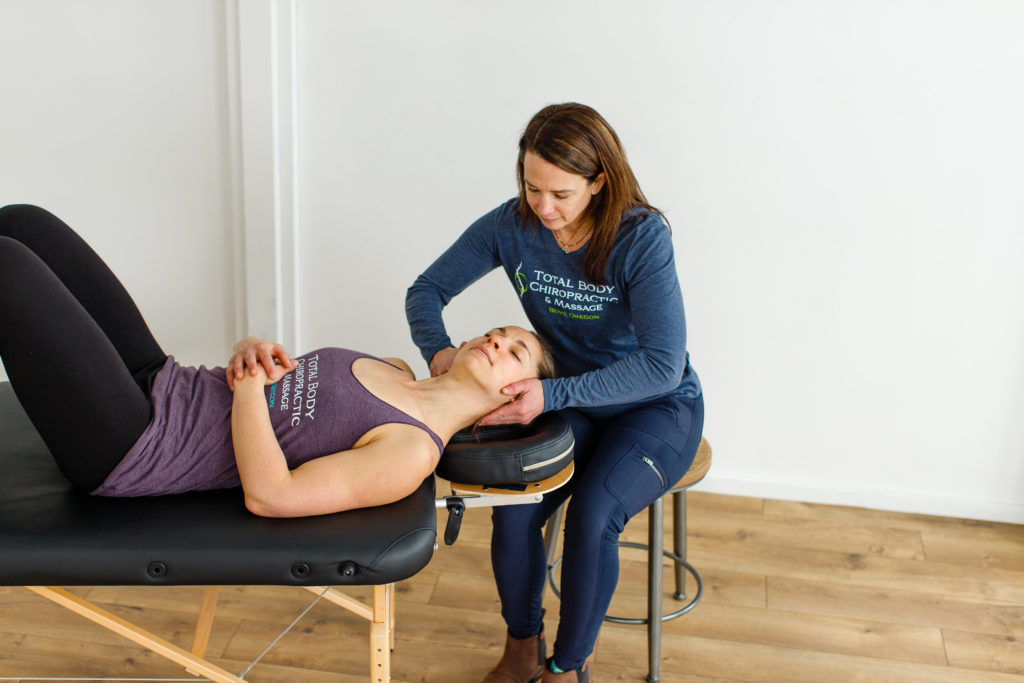
Chiropractors focus on your musculoskeletal system, mainly the spine, with manual therapies. Our Bend chiropractors will use hands-on techniques to:
- Restore spinal alignment
- Relieve nerve irritation
- Accelerate your body’s self-healing
Let’s see how chiropractic care works.
How Chiropractic Works?
Spinal adjustments are the basis of chiropractic care in Bend. Chiropractors will gently realign your spine and its vertebrae, especially the neck ones. That’s why they reduce pressure on your nerves and bolster your joints’ mobility. Your nervous system also becomes well-balanced. No wonder several studies done in the past have confirmed that chiropractic care can “reduce the migraine severity, frequency, duration of suffering and associated disability.”
Benefits of Chiropractic Care for Headaches
- Chiropractors reduce nerve irritation and muscle tension caused by a misaligned spine.
- Realigning your spine/joints means your joints and muscles are now under less strain, so your headaches will be less frequent than before.
- Your headaches will also be less intense (occurring less often as well), especially for tension-type and cervicogenic headaches.
- You can avoid the side effects and dependency risks of pain meds thanks to our chiropractors in Bend.
4 Chiropractic Techniques for Headache Relief
Our Bend chiropractors use several effective treatments to help headache sufferers.
1. Spinal Manipulation (Chiropractic Adjustments)
Our chiropractors reduce pressure on your nerves by realigning the cervical spine carefully. They correct postural imbalances as well. This technique works perfectly well for tension/cervicogenic headaches.
2. Soft Tissue Therapy
As headaches are often caused by tension in your neck and shoulder muscles, our chiropractors will use trigger-point therapy and myofascial release for triggering tight muscles. They will break up knots, trying to restore normal movement. So, this technique will give you pain relief, and your headaches may even disappear for good.
3. Postural Education & Ergonomic Advice
Since poor posture is the culprit behind many headache types, our chiropractors in Bend will show you how to maintain a healthy posture. They will give you practical ergonomic advice as well on how to make your workspace health-friendly. We’ll show you simple stretches and home care strategies to keep your muscles relaxed and your spine aligned.
4. Lifestyle and Nutritional Counseling
Headaches also have lifestyle triggers like dehydration or certain allergies. Our team identifies these triggers so you may avoid them. They will offer you personalized advice on hydration and nutrition. You will also get stress management advice from them.
Complementary Massage Therapy Techniques

At Total Body Chiropractic, we offer massage therapy to complement our chiropractic care in Bend for headache sufferers. Our therapists may use several different massage techniques for headache pain:
- Deep Tissue Massage: This technique will target chronic tension in your muscle’s deep layers, chiefly your neck and shoulders. So, deep tissue massage will break up stubborn knots and improve blood flow. This type of massage prevents future flare-ups as well.
- Craniosacral Therapy: How about a gentle, hands-on technique? Craniosacral therapy focuses on how your cerebrospinal fluids flow around the brain. This massage therapy releases tension in your head and neck, providing migraine relief and less severe headaches
- Trigger Point Therapy: Trigger points often refer pain to other body parts. These pressure points are tight, tender points in your muscles. Our massage therapists use targeted pressure to release these knots.
Chiropractic adjustments work hand in hand with massage therapy. Chiropractic care realigns your spine and restores nerve function. Massage therapy leads to muscle relaxation and better blood circulation. A combined effect of both these approaches is long-lasting pain relief. Thus, our Bend chiropractors and massage therapists collaborate to create a personalized care plan that addresses your unique needs.
When to See Our Bend Chiropractors for Headaches?
You’re probably wondering if your headaches are spine-related. When is it perfectly suitable to look for chiropractic care in Bend? What are the signs? Well, here’s when you should see a chiropractor:
- You have splitting headaches that disrupt your daily life.
- Your headaches have become more frequent than before.
- Headaches start after an injury or when you spend hours at work.
- Your headaches come with neck pain, stiffness, and motion-related pain.
- OTC painkillers aren’t helping, or you want to avoid medication cold turkey.
Do any of these signs sound familiar to you? If they do, schedule an appointment with our Bend chiropractic clinic. We’ll conduct a thorough assessment of your symptoms and headache types. This way, we’ll identify the root cause of your pain to develop a customized treatment plan.
Reclaim Your Life from Headache with Massage Therapy in Bend
Don’t let headaches control your life — get relief from migraines with chiropractic care and massage therapy at Total Body Chiropractic. Our Bend chiropractors address the underlying causes and help you find lasting comfort. Whether it’s spinal misalignment or muscle tension, we’ll discuss how these non-invasive treatment options improve your quality of life. If you’re ready to take the next step, make an appointment today and get on the path to a headache-free future.



